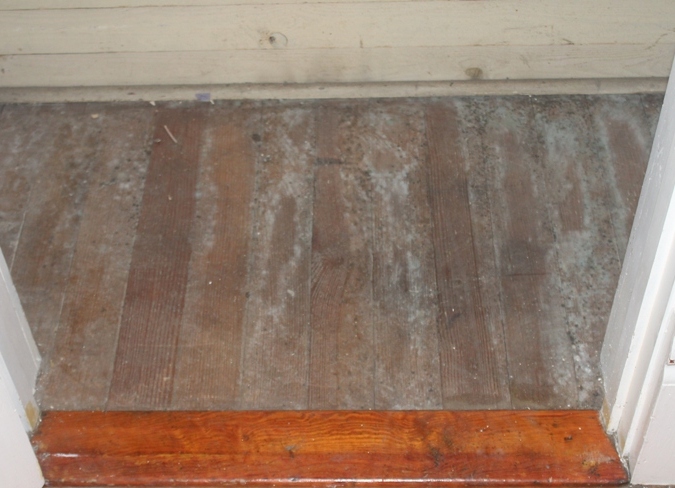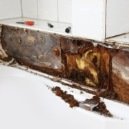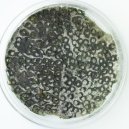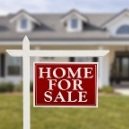Find a pre-screened local mold removal specialist Free Estimate
Find a Mold Specialist Now
Click or Call, Toll-Free 24/7
Wood Flooring Mold Problems
Wood flooring mold problems can happen anywhere within your home when the wood flooring, an organic food source, comes into contact for an extended period of time with excess moisture. If any moisture is not removed in a timely manner, it is very likely that mold will begin to grow. Sometimes the mold will only be a light amount on the surface, but more times than not, when mold does begin to grow on wood flooring, it grows on the underside first between the bottom of the hardwood and the top of the subfloor. This is especially true if there has been a large water loss. Mold loves darkness and a lack of air movement, which is exactly the condition that exists on the underside of your wood flooring.
Surface Mold On Wood Flooring
Occasionally you will notice mold on the surface of wood flooring. If this is a small amount of mold, it can be easily removed and cleaned. Make a solution of one cup of bleach per each gallon of water. Lightly apply the solution using a spray bottle and allow the solution to dwell about 10-15 minutes. Then gently wipe using a sponge or soft cloth. When you are done wiping, be sure to discard the cloth or sponge. Don’t leave the contaminated cloth or sponge lying around your home. Make sure that all of the solution is removed and that the treated area is allowed to dry completely. (Bleach is not a product I recommend for use on porous materials and in this case I would only use it for a very small amount of mold on wood flooring that has been sealed with varnish or polyurethane.) Other products that you may use instead of bleach are white vinegar, soap and water, or concrobium mold cleaner. Be sure to protect yourself by wearing a mask or respirator, as well as chemical resistant gloves and clothing (tyvek suits).
If the mold problem is larger, or doesn’t respond to attempts to wipe it off, sanding may be required. At this point you have a much more costly problem that will probably result in sanding and refinishing the entire floor.
Mold On The Underside of Wood Flooring
One of the hardest issues to find and treat is when wood flooring mold problems are on the underside of the hardwood. Until you begin to notice musty odors or warping begins to show on the hardwood floor itself, you may not realize there is a problem. When moisture becomes trapped under a floor, the wood begins to slowly absorb it. As the boards absorb the water they expand and begin to warp. Hardwoods normally have moisture content levels of 10% or less. Once moisture content levels reach 18% or higher, there is a strong chance for mold to grow.
The only way to find a wood flooring mold problem that is under the hardwood is to physically look for it. At this point it is recommended that you contact a wood flooring installer or a mold remediation specialist. They will have the experience necessary to begin removing flooring planks without damaging them.
DIY Cleanup of Wood Flooring Mold Problems
If you are a true do-it-yourself type person, here are a few tips on how to proceed. Warning - this method will only work if the flooring is NOT glued down. First remove any trim around the edges of your floor. If you have a laminate floor that snaps or clicks together, removing and reinstalling the planks is much easier. If your floor has been nailed or stapled, much more care is required to remove affected boards. To begin with, you must determine which side of the floor was installed first and start on the opposite side (you may be able to remove a floor vent to see which side of the plank has a tongue on it; the end containing the tongue is the side of the floor to start on). You must gently pry up on the board nearest the wall and slowly work your way down the entire length of the board, taking care not to damage the tongue or the groove on the next board (Any damage to the tongue or the grove will make reinstallation much more difficult). Remove as many boards as necessary to expose mold contaminated areas.
Mix a cleaning solution in a large bucket. (I like to use borax, one cup per gallon of water). Dunk a broom into the solution and scrub it onto the subfloor making sure to thoroughly apply the solution to the entire affected area. Use a spray bottle to apply the solution to hard to reach areas. Allow the solution to dwell for at least 10-15 minutes. Scrub the affected areas then reapply the solution. Wait another 10-15 minutes and then repeat the scrubbing. Allow the entire area to dry for at least 48 hours.
You must then examine any removed flooring boards to determine whether they can be cleaned and reused. Any flooring planks contaminated by mold that are deemed to be salvageable must also be cleaned. First wet the boards with water only. After several minutes, apply the borax solution and wipe. Repeat this process as necessary. Allow the flooring planks to dry at least 48 hours before attempting to reinstall them.
After treating all affected surfaces, a HEPA vacuum should be used to vacuum the entire room. Vacuum the floor, walls, ceiling and anything else that was left in the room. This will hopefully remove any mold spores that may have drifted around and landed on any surfaces. After vacuuming, all surfaces should then be wiped down a final time with the cleaning solution.
The Specialist Method
As you can see from the previous method, remediating wood flooring mold problems, especially those underneath the flooring, requires a lot of effort, time and knowledge. In most cases it may be a better option to contact a professional mold remediation expert. These restoration specialists have the training, experience, and equipment needed to safely remove mold from anywhere in your home. Successful mold removal requires the proper protective clothing, cleaning agents, and specialized air filtration equipment to ensure that the mold is not only removed, but it will not reoccur. If you would like to schedule a free, no-obligation inspection, follow this link to get a list of local Mold Remediation Experts.
Return From Wood Flooring Mold Problems To Home Page
Written by Mark Huey.
Free Home Inspection By A Mold Removal Specialist
Search This Website
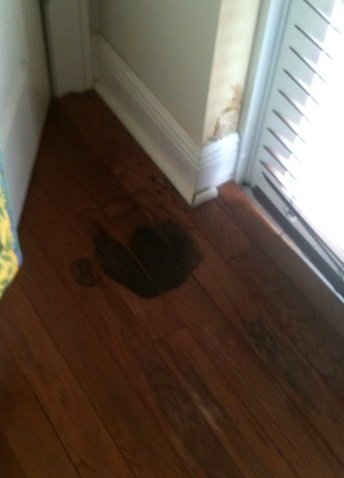 Mold on hardwood floor
Mold on hardwood floorRecent Articles
-
See Our 5 Recommended Mold Removal Companies in Aberdeen, SD
Oct 08, 21 04:05 PM
-
Public Housing Tenant Sick from Mold
Apr 24, 20 01:40 PM
-
Mold Types Found In Homes .......Identification, Finding Mold, Testing
Jan 27, 20 02:32 PM
